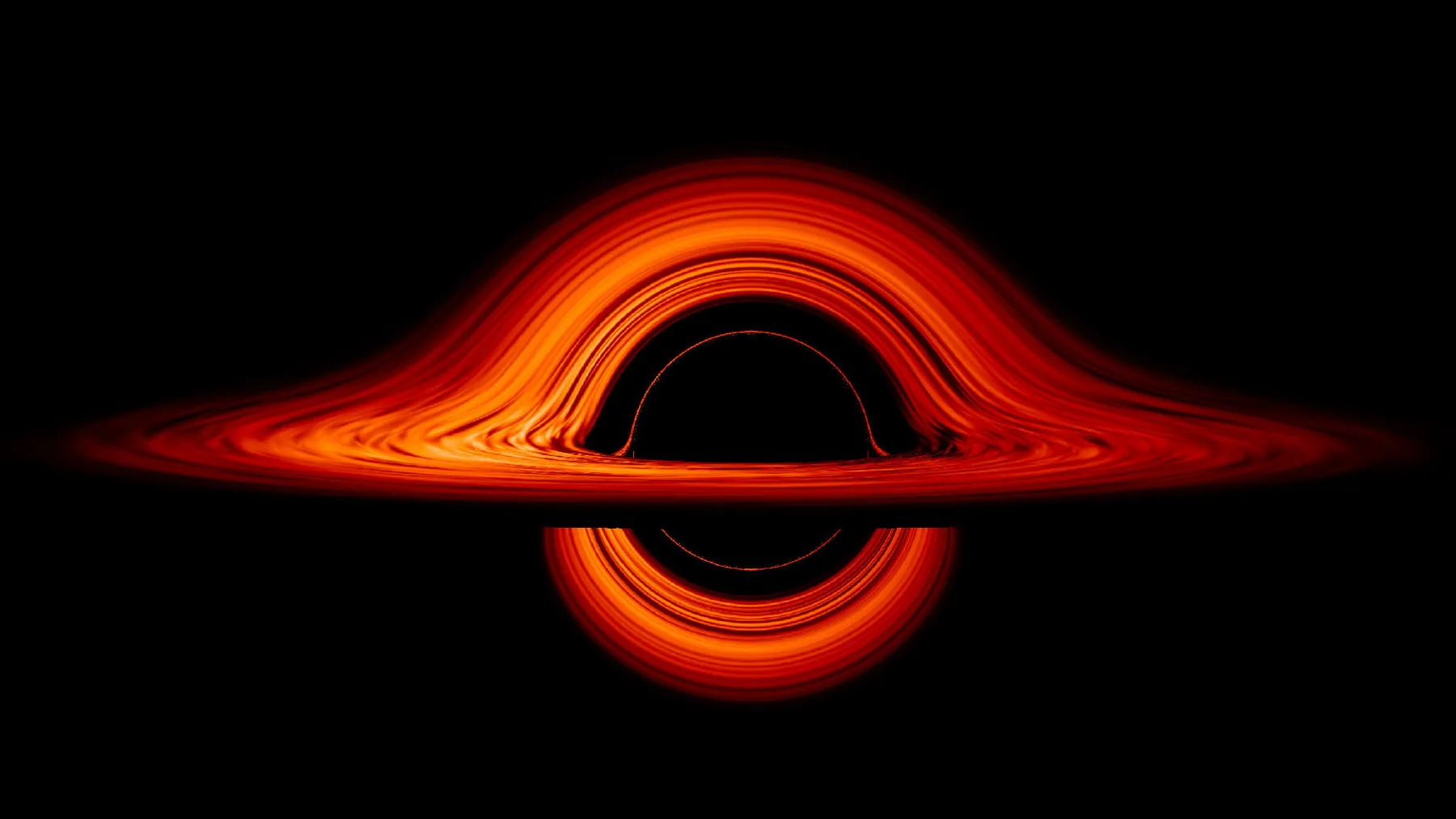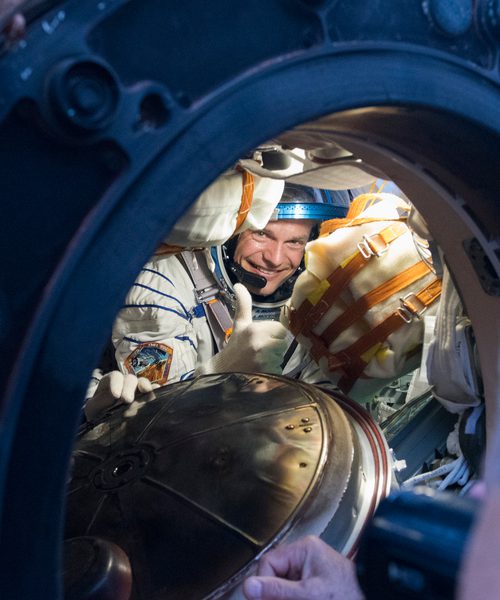
Black holes
Many of the elements in your body come from big stars, but what happens when big stars die? We take a closer look at the big boys of the universe
Violent gravity
Stars act as element factories out in the universe. Here, lighter elements combine to form heavier ones. The violent explosion leaves behind a very heavy remnant - a neutron star; and if it's really heavy - a black hole.
Black holes are one of the things you can learn about in the Cosmos exhibition.
Black holes are not holes as we know them. They are a collection of material that is so tightly compressed that gravity is enormous. So big that nothing can escape from it. Not even light. Because light cannot escape the black hole, we cannot see it. The opposite of light is darkness, and darkness in the universe is black, which is why it got that name.
The word hole is particularly misleading as it is not a real hole in the three dimensions that we can perceive. We call it a hole in spacetime, but spacetime has time as a fourth dimension, which is why our brain may have difficulty understanding it. It was Albert Einstein who first predicted that black holes should exist in his ‘general theory of relativity’ and the name has stuck.
Black holes are one of the most violent phenomena in the universe and anything that gets too close will be caught by gravity. Once inside the black hole, there is no chance of escape.
So not even light can escape a black hole. On the other hand, black holes are thought to be responsible for some of the most luminous phenomena in the universe. This happens when material around a black hole that is falling towards the black hole is heated to several thousand degrees and begins to glow. This is called a quasar and we see them at the centre of many galaxies.
Several types of black holes
Black holes come in many sizes and with different properties. Black holes can probably form in many different ways, and not all of them are equally well understood by scientists. But some black holes are probably formed when large stars die.
When stars weighing more than 8 times our sun die, the interior of the star collapses into a black hole. There are also extremely heavy black holes - supermassive black holes, as they are called. They are at the centre of most, if not all, galaxies - and our galaxy is no exception.
At the heart of the Milky Way is something that emits energy in many different wavelengths. It is believed that the energy is coming from gas that is about to fall into the supermassive black hole, Sagittarius A. It has also been calculated that there is something at the heart of the Milky Way that controls the movement of the stars - something that weighs millions of times the weight of the Sun, but occupies an area smaller than the Solar System. The explanation is a supermassive black hole.

Indirect observations
Although we can't see black holes, we have many indirect observations that tell us they exist. We can observe the effect that black holes have on their surroundings - and it's dramatic. If a star or nebula gets too close to a black hole, it is pulled into the black hole's gravitational field.
The dust and gas pulled towards the black hole forms a disc of extremely hot matter that is pulled towards the centre where it eventually disappears into the black hole. Close to the black hole, the gases have a high velocity and emit radiation that we can observe. If the light from the disc around supermassive black holes is very bright, it is categorised as a quasar - one of the most energetic phenomena in the universe.
Holes in the universe
We have previously talked about spacetime being the three dimensions that we can see, and also time. Spacetime is a concept Einstein used in his ‘general theory of relativity’ to describe a three-dimensional space with an extra dimension of time. When approaching a black hole, time slows down because spacetime is bent so strongly by the black hole's gravity.
The mysterious centre
There is still a lot we don't know about black holes. Perhaps the most mysterious is the singularity that exists at the heart of a black hole. Here, none of the laws of physics can describe what happens - not even the theory of relativity.
At the centre of a black hole, gravity and density are infinitely large. In theory, an object caught in the gravity of a black hole will be compressed into a single point when it gets too close to a black hole.
The gravity of a black hole is so strong that the speed required to escape exceeds the speed of light. The limit at which light can no longer escape the black hole's gravity is called the event horizon.
If we imagine that an astronaut was inside a black hole and she was trying to send signals out of the black hole, it would not actually be possible for us to pick up the signals - information cannot escape.
Future research
There are various experiments and projects trying to describe black holes. The Event Horizon Telescope project is an attempt to observe the event horizon of a supermassive black hole for the first time in history. To do so, scientists have built a virtual telescope as big as the Earth. By joining forces with radio telescopes around the globe, they should be able to create an image of the supermassive black hole at the centre of the Milky Way.
It will be a great moment if we can finally see a black hole directly, especially because there are still many unanswered questions about black holes, such as: What role do black holes play in the evolution of galaxies? What can we say about the relationship between the mass of the black hole and the energy it emits? Can we map the disc of matter surrounding a black hole? How does spacetime behave around a black hole? These are just some of the questions that are being worked on to find answers to in the future.









